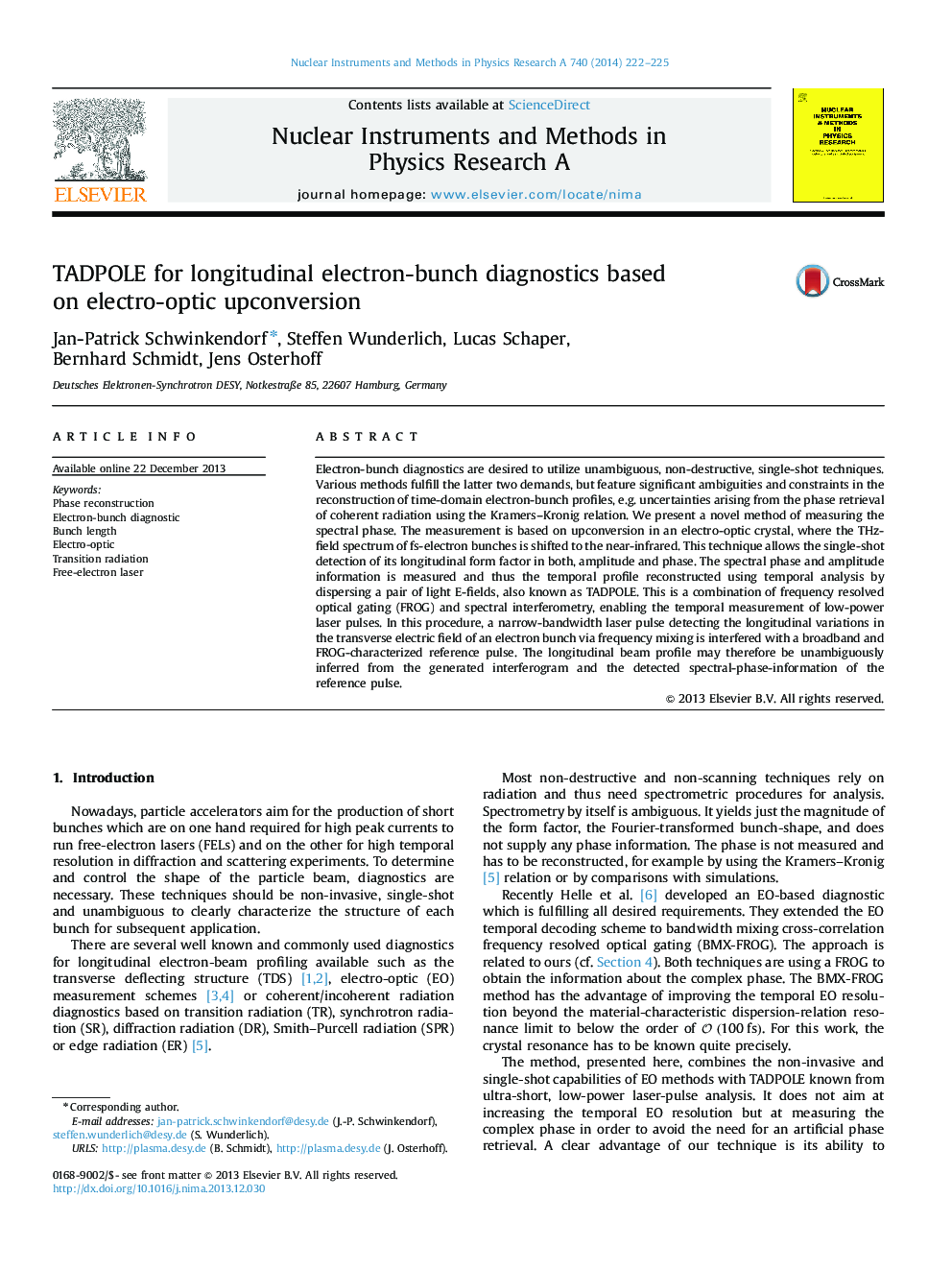| Article ID | Journal | Published Year | Pages | File Type |
|---|---|---|---|---|
| 8177435 | Nuclear Instruments and Methods in Physics Research Section A: Accelerators, Spectrometers, Detectors and Associated Equipment | 2014 | 4 Pages |
Abstract
Electron-bunch diagnostics are desired to utilize unambiguous, non-destructive, single-shot techniques. Various methods fulfill the latter two demands, but feature significant ambiguities and constraints in the reconstruction of time-domain electron-bunch profiles, e.g. uncertainties arising from the phase retrieval of coherent radiation using the Kramers-Kronig relation. We present a novel method of measuring the spectral phase. The measurement is based on upconversion in an electro-optic crystal, where the THz-field spectrum of fs-electron bunches is shifted to the near-infrared. This technique allows the single-shot detection of its longitudinal form factor in both, amplitude and phase. The spectral phase and amplitude information is measured and thus the temporal profile reconstructed using temporal analysis by dispersing a pair of light E-fields, also known as TADPOLE. This is a combination of frequency resolved optical gating (FROG) and spectral interferometry, enabling the temporal measurement of low-power laser pulses. In this procedure, a narrow-bandwidth laser pulse detecting the longitudinal variations in the transverse electric field of an electron bunch via frequency mixing is interfered with a broadband and FROG-characterized reference pulse. The longitudinal beam profile may therefore be unambiguously inferred from the generated interferogram and the detected spectral-phase-information of the reference pulse.
Related Topics
Physical Sciences and Engineering
Physics and Astronomy
Instrumentation
Authors
Jan-Patrick Schwinkendorf, Steffen Wunderlich, Lucas Schaper, Bernhard Schmidt, Jens Osterhoff,
